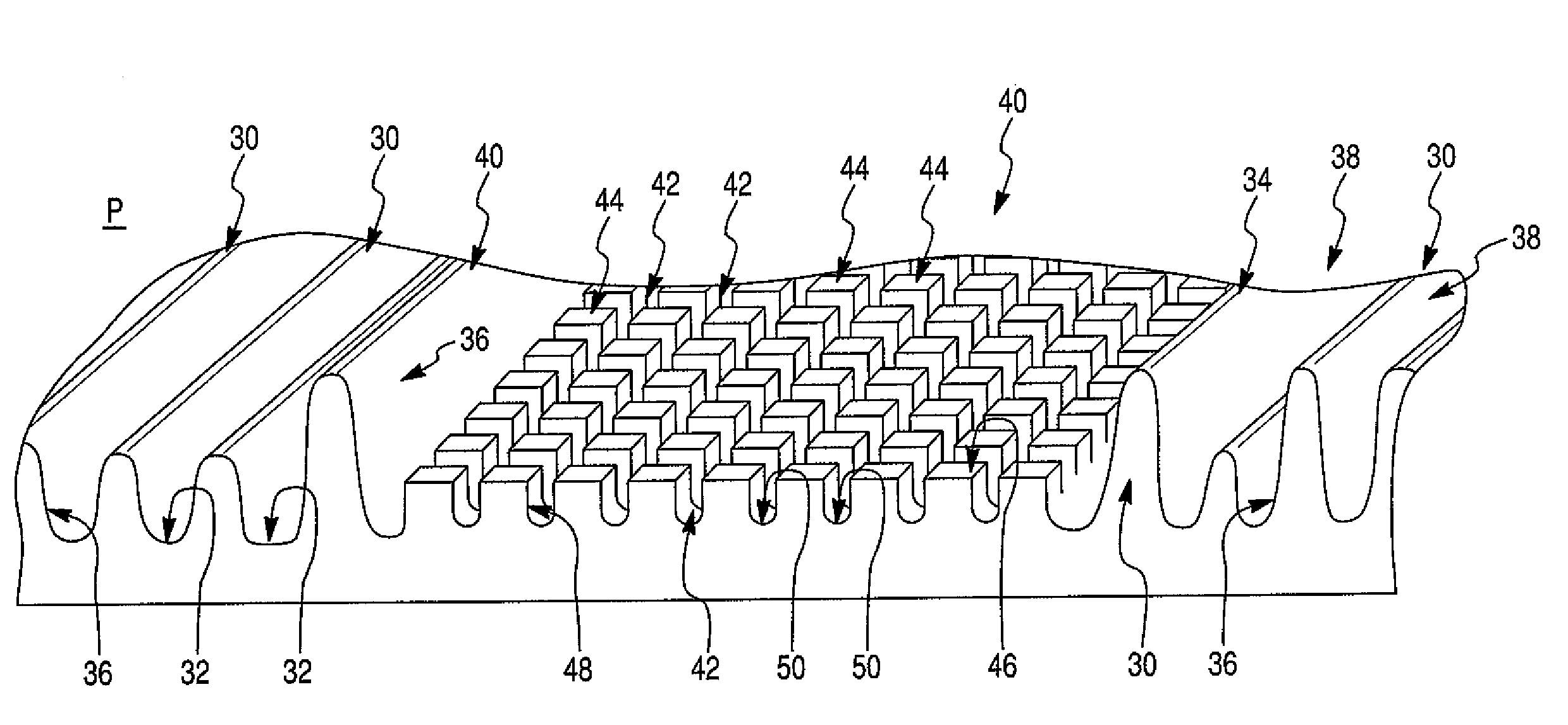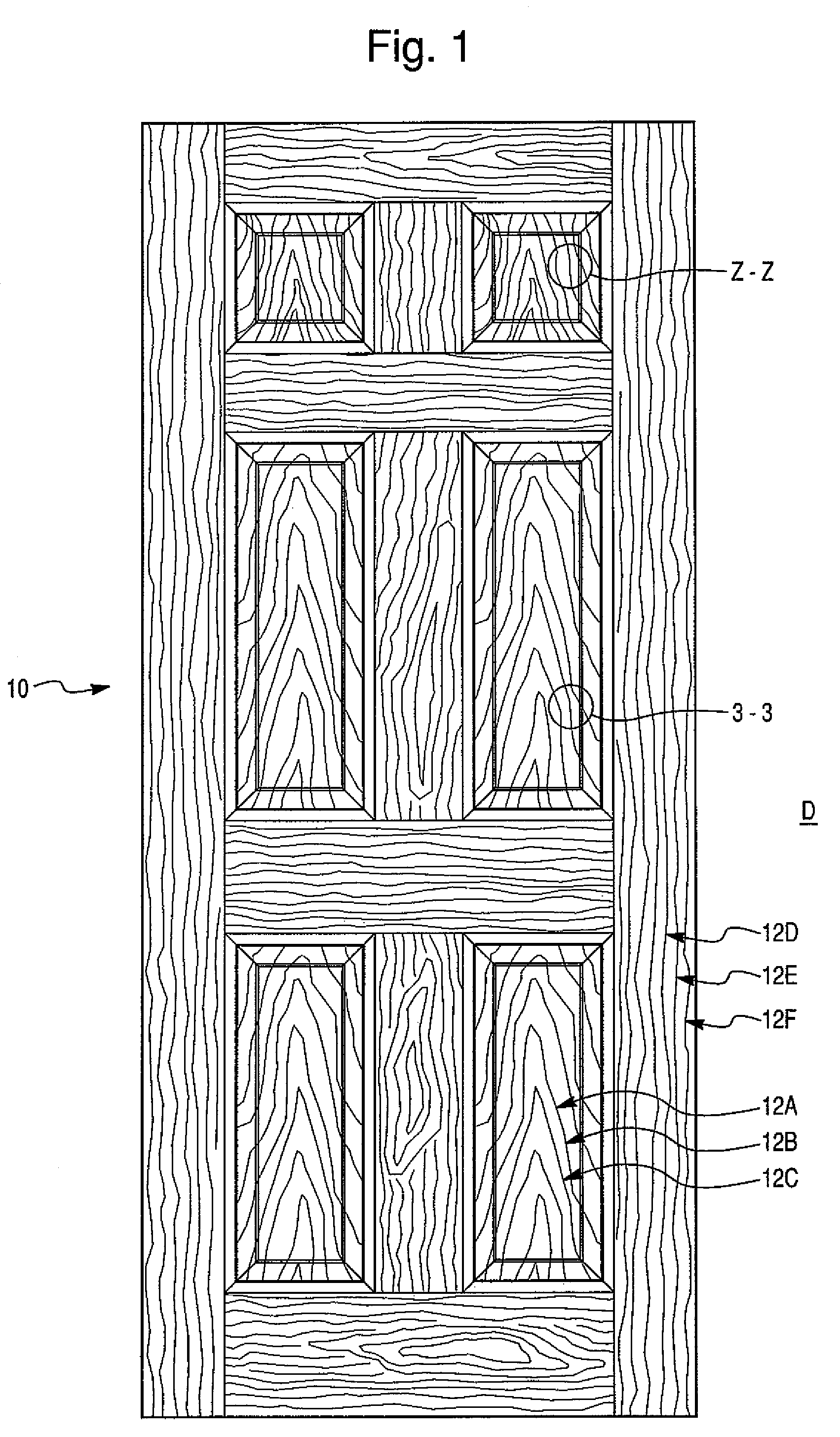Door skin, a method of etching a plate, and an etched plate formed therefrom
a technology for etching plates and doors, applied in the field of interior or exterior passage doors, can solve the problems of inability to stain and/or finish door skins, inability to print patterns with depth or texture, and inability to simulate crisp wood grain ticks in print ink,
- Summary
- Abstract
- Description
- Claims
- Application Information
AI Technical Summary
Benefits of technology
Problems solved by technology
Method used
Image
Examples
Embodiment Construction
[0020]The present invention is directed to a door skin D having a naturally appearing wood grain pattern formed in an exterior surface 10, as best shown in FIG. 1. The wood grain pattern may be formed using an etched plate, such as in an embossing plate or molded die set, or other process known in the art. As best shown in FIG. 2, exterior surface 10 of door skin D comprises a plurality of spaced grooves 12 that are formed into exterior surface 10, and simulate wood ticks as found in natural wood. Each one of grooves 12 is defined by opposing walls 14 and a base 16. A plurality of outer portions 18 lie on a first plane that includes the most exteriorly disposed surfaces of exterior surface 10. Interfaces 15 interconnect and are integral with outer portions 18 and walls 14. Preferably, interfaces 15 are curved. Outer portions 18 separate adjacent grooves 12. Preferably, grooves 12 are recessed from the first plane from between about 0.005 inches to about 0.015 inches, and may have va...
PUM
| Property | Measurement | Unit |
|---|---|---|
| height | aaaaa | aaaaa |
| height | aaaaa | aaaaa |
| widths | aaaaa | aaaaa |
Abstract
Description
Claims
Application Information
 Login to View More
Login to View More - R&D
- Intellectual Property
- Life Sciences
- Materials
- Tech Scout
- Unparalleled Data Quality
- Higher Quality Content
- 60% Fewer Hallucinations
Browse by: Latest US Patents, China's latest patents, Technical Efficacy Thesaurus, Application Domain, Technology Topic, Popular Technical Reports.
© 2025 PatSnap. All rights reserved.Legal|Privacy policy|Modern Slavery Act Transparency Statement|Sitemap|About US| Contact US: help@patsnap.com



